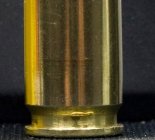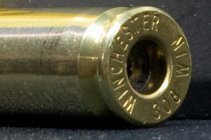300 RUM
Gene Nowaczyk
I was doing some load development this week and noticed some bad signs. I loaded up 20 win 308's and 20 Lapua 308's with the exact same charge (41gr H4898). The lapua brass which is what I have been using for some time looked just fine after firing and then FL sizing. BUT! the Win brass loaded with the same (41grs H4898)looked fine after firing but after FL sizing (cleaned case)the Win brass measured .463 just after the extractor grove and tapers up to .468 is this a pressure sign?













